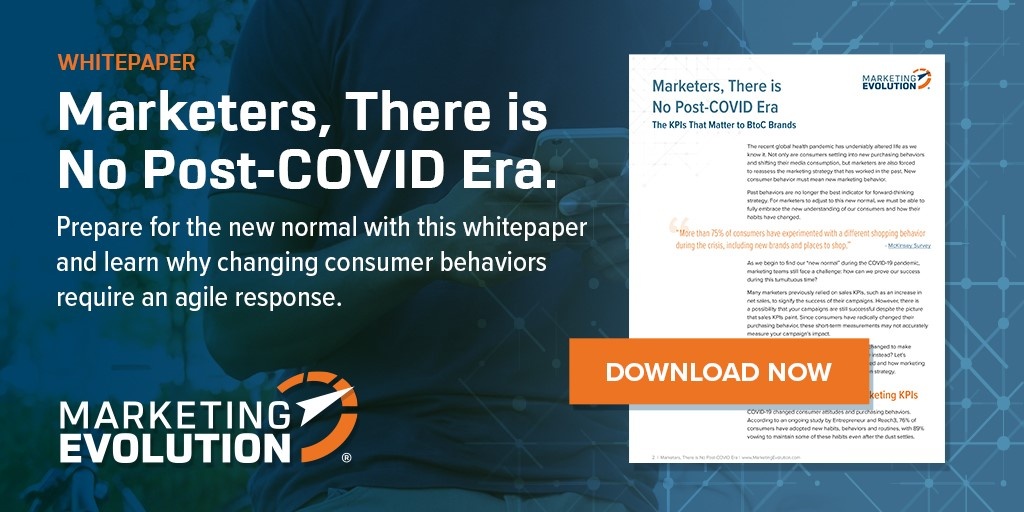What is Marketing ROI and How Do You Calculate It?
One of the most important components of a marketing campaign is to evaluate its performance and impact and profit so that it can be determined whether or not your marketing efforts are actually helping the company improve its bottom line. The insights gained through the process can be used to drive future, data-driven strategies for smarter decision-making. Let’s explore the concept of return on investment (ROI) in marketing:
What is ROI in Marketing?
Marketing ROI is the practice of attributing profit and revenue growth to the impact of marketing initiatives. By calculating return on marketing investment, organizations can measure the degree to which marketing efforts either holistically, or on a campaign-basis, contribute to revenue growth. Typically, marketing ROI is used to justify marketing spend and budget allocation for ongoing and future campaigns and initiatives.
How is Marketing ROI Used by Companies?
At an organizational level, calculating return on marketing investment can help guide business decisions and optimize marketing efforts. For marketers, understanding the ROI generated by a campaign helps:
Justify Marketing Spend
CMOs consistently list allocating resources and budget for marketing efforts as a top priority.However, in order to secure budget and resources for future campaigns, it’s crucial that current marketing spend and budget be justified at the executive level. To do so, marketers need to accurately calculate the ROI their marketing efforts are delivering for the organization. For example, they should know if native ads are driving conversions and ROI, while display ads fall flat. From there, budgets can be properly allocated.
Distribute Marketing Budgets
Across online and offline channels, there’s a myriad of possible marketing mix combinations. However, any combination of campaign initiatives require funding. That’s why understanding which online and offline efforts drive the most revenue is a must for properly distributing the marketing budget.
Measure Campaign Success and Establish Baselines
A crucial part of any successful marketing team is the ability to measure campaign success and establish baselines that can serve as a reference for future efforts. With this in mind, accurately measuring ROI helps marketers do both. By understanding the impact of individual campaigns on overall revenue growth, marketers can better identify the right mix of offline and online campaign efforts. Moreover, measuring ROI consistently allows marketers to establish baselines to quickly gauge their success and adjust efforts in order to maximize impact.
Competitive Analysis
Tracking the marketing ROI of competitors allows marketers to accurately understand how their organization is performing within their specific industry. For example, marketers tracking publicly available financial data can estimate the ROI of competitors and adjust baselines to reflect these estimates—helping to keep efforts consistently competitive.
How Do You Calculate / Measure Marketing ROI?
While there are several different ways to calculate marketing ROI, the core formula used to understand marketing impact at a high-level is relatively straightforward:
(Sales Growth - Marketing Cost) / Marketing Cost = Marketing ROI
It’s important to note, however, that this formula makes the assumption that all sales growth is tied to marketing efforts. In order to generate a more realistic view of marketing impact and ROI, marketers should account for organic sales.
(Sales Growth - Organic Sales Growth - Marketing Cost) / Marketing Cost = Marketing ROI
When leveraging marketing ROI formulas, it’s also important to understand the total ROI marketing efforts have generated. Be aware that definitions for an actionable “return” can vary based on the marketing team’s strategy and campaign efforts, as well as general overhead related to campaign implementation. Let’s explore some key elements to factor into your marketing ROI calculations:
- Total Revenue: By looking at the total revenue generated from a particular campaign, marketers can gain a clear holistic overview of their efforts. Accounting for total revenue when measuring marketing ROI is ideal for strategic media planning, budget allocation and overall marketing impact.
- Gross Profit: Tying in gross profit helps marketers understand the total revenue that marketing efforts generate in relation to the cost of production or delivery of goods and services. To do this, marketers should add the following to their marketing ROI formula: = (Total revenue - cost of goods to deliver a product).
- Net Profit: Diving deeper, marketers can calculate the impact of their marketing efforts toward net profit by adding the following to their formula: = (Gross profit - additional expenses).
It’s important to consistently define what profit/expenditures and overall ROI your team will account for across marketing ROI measurement efforts. Consider including the following:
- Overhead and internal expenses
- Agency fees
- Media buys
- Creative
Marketers can also calculate ROI through customer lifetime value (CLV), which sheds light on the value of each individual customer relationship with a brand. This formula helps assess long-term ROI across the consumer’s lifecycle. To do this, marketers can use the following formula:
Customer Lifetime Value = (Retention Rate)/ (1 + Discount Rate/ Retention Rate)
What is a Good Marketing ROI?
The rule of thumb for marketing ROI is typically a 5:1 ratio, with exceptional ROI being considered at around a 10:1 ratio. Anything below a 2:1 ratio is considered not profitable, as the costs to produce and distribute goods/services often mean organizations will break even with their spend and returns.
However, costs and overhead lower than 50 percent of the sales price can see profits on their efforts at lower ratios. Because every organization is different, it’s important to consider the unique overhead costs, margins, and industry factors and standards unique to the sector.
What Are the Challenges of Measuring Marketing ROI?
The calculations needed to measure marketing ROI may seem simple, but they can quickly become complex and layered. Consider the following:
Marketing Measurements are Too Simplistic
In order to evaluate true marketing ROI, there are many factors to consider. Primarily, there should be a clear and consistent sales baseline for marketers to measure against. Additionally, ROI measurements should account for external factors that impact campaign success, including weather, seasonal trends, events, etc.
Marketers are Focused on Short-Term Results
Many marketers focus on specific, immediate metrics to gauge the success of their efforts. All too often, we look at click-through rates, impressions, social shares, etc. However, campaigns focused on driving long-term initiatives like brand awareness, customer relationships or customer retention often take months or years before marketers can see the full impact. With this in mind, it’s important to align success metrics with the overall goal and duration of a given campaign.
The Marketing Landscape is Omnichannel
Today’s omnichannel campaigns aren’t limited to a specific channel, but a number of touchpoints across online and offline channels. Focusing marketing ROI measurements on specific channels will only provide marketers with pieces of the overall marketing impact puzzle. Now, accurate marketing ROI measurement relies on unified marketing measurements capable of aligning disparate measurements into cohesive, granular insights.
Multiple Touchpoints Before the Purchase
It takes, on average, 6-10 touchpoints before a consumer reaches a buying decision. In order to truly measure marketing ROI at the granular level, marketers need to understand the impact of online and offline touchpoints across the marketing mix. The relationship between these touchpoints in the sales funnel also need to be accounted for when measuring marketing returns.
Outdated Attribution Models
As marketers measure and attribute the impact of touchpoints and channels, using outdated attribution models can lead to misattribution, which can skew the accuracy of ROI measurements. Leveraging aggregate measurements like media mix models will not provide the granular insights marketers need. On the flipside, granular measurements like multi-touch attribution models will not indicate the impact offline channels and external factors have on marketing ROI.
Tips for Improving Marketing ROI
Now that you’re aware of the concept of marketing ROI and what a good ROI in marketing is, the next step is to begin applying insights learned to future marketing efforts to optimize future performance. Let’s take a look at a few tips for improving ROI for long-term marketing success:
1. Establish Clear Goals
In the book, What Sticks: Why Most Advertising Fails and How to Guarantee Yours Succeeds, Rex Briggs coined the term "ROMO'' for Return-On-Marketing-Objective. Alternative to marketing-return-on-investment (ROMI), tThis term uncovers the notion that there can be more to a campaign than just ROI, such as changing brand or perception.
With this in mind, it’s crucial for marketers to establish clear goals that indicate what external factors make up their ROMOs, as well as how these unique factors can be measured (and subsequently applied to marketing ROI calculation). Consider leveraging measurements like brand awareness strategy surveys, social platform engagements, or the ratio between MQLs and SQLs.
2. Determine Costs
Establishing marketing costs like creative development, personnel, agency fees, overhead, among others, can help marketers clearly formulate their marketing ROI measurement strategies and decide on what metrics to include in their ROI calculations.
3. Leverage a Marketing Analytics Platform
Utilizing the right attribution models and marketing measurement strategies works wonders to track consumers across the omnichannel landscape, leading to clearer holistic and granular results. Focus on a marketing technology platform with the capability to unify disparate attributions alongside online and offline measurements. Armed with an analytics tool like the Marketing Evolution Platform, marketers will have clearer insights to use in their formulas—leading to more efficient and accurate ROI measurement.



















